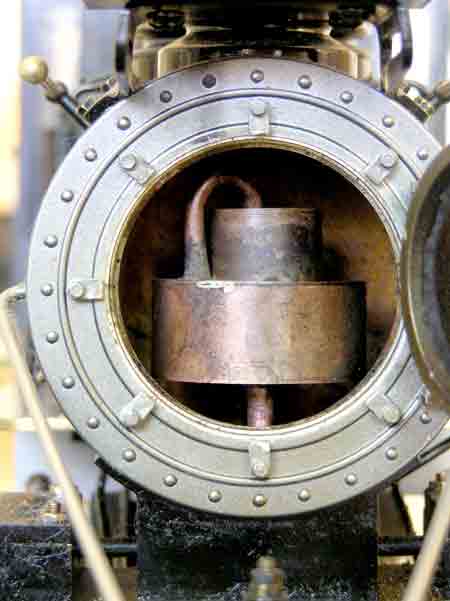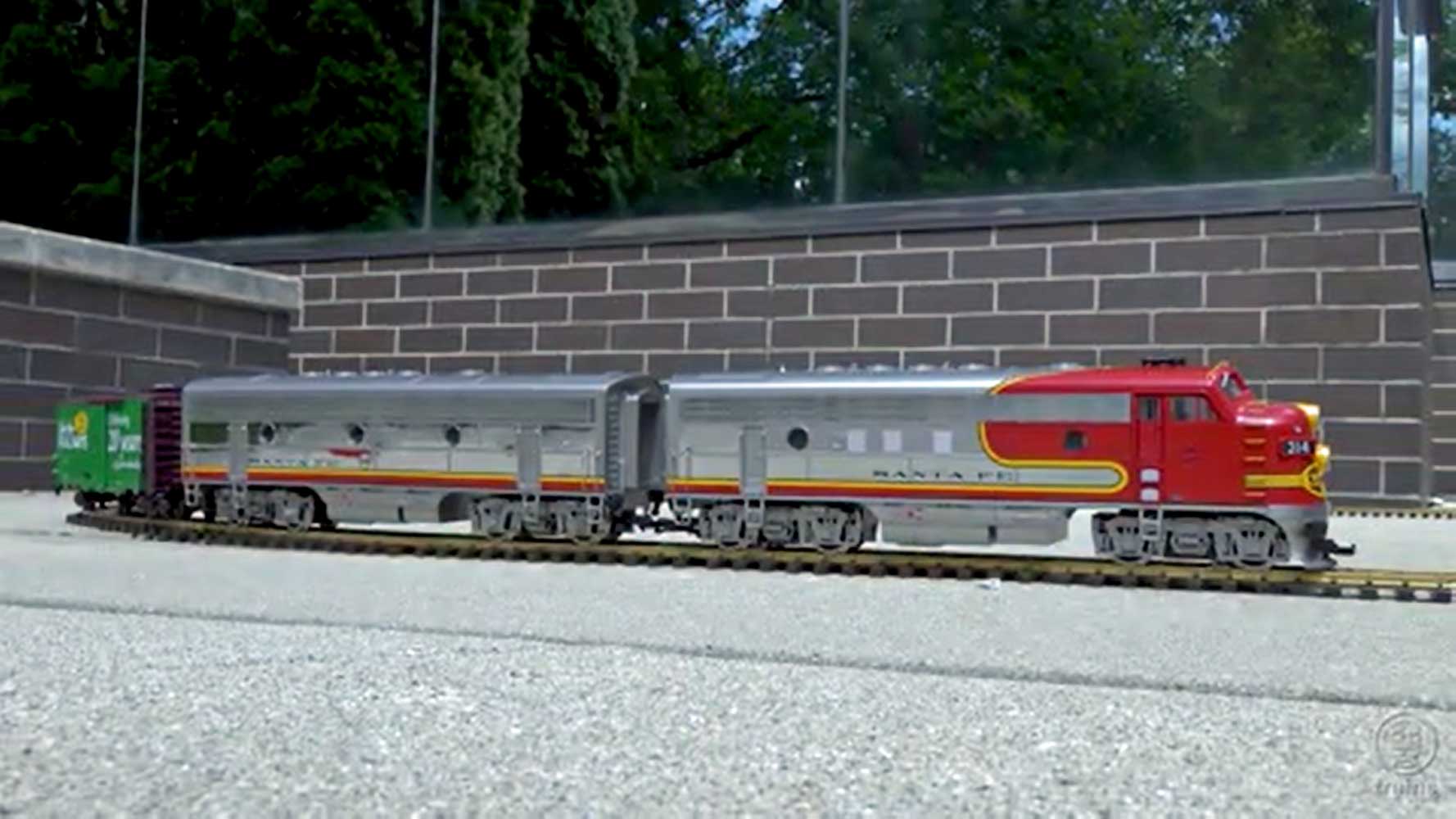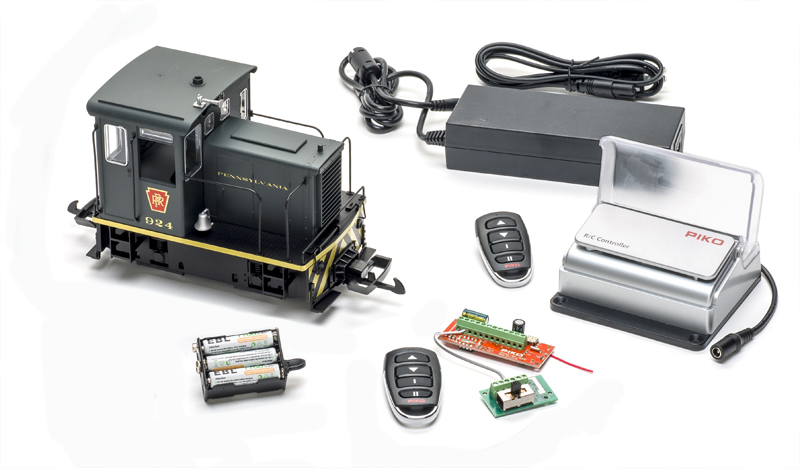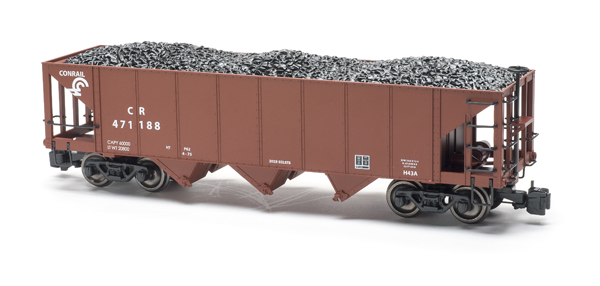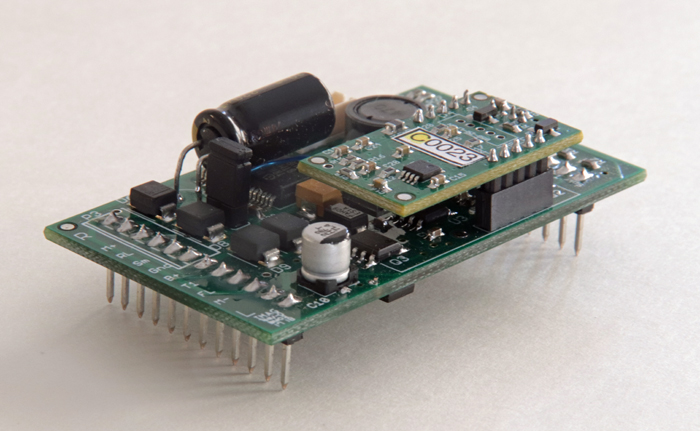See Vance Bass’ video of this device!
Trainmax “Bark Box”
R&R Train Company
2459 Odin
New Orleans LA 70122
Price: $100-$125, depending
on model (+ s&h)
Web site: www.trainsales.com/barkbox.htm
Smokebox resonator to enhance exhaust sound of live-steam locomotives; available for a number of popular gas-fired locomotives
Pros: Remarkable increase in volume and depth of steam exhaust sounds; quality construction; eliminates ejection of condensate when engine is cold
Cons: Fiddly installation procedure
Well, that may have been true if you were a commuter in 1899 but not for us model railroaders today. We like to hear the ear-piercing exhaust of our locomotives. There has always been one way in which electrically-powered “steam” locomotive models have had an advantage over live-steam models: noise. A good electronic sound system adds immeasurably to the realistic sensation of watching a locomotive move along the track. Live-steam locomotives in the garden scales have many things to recommend them but, alas, most engines tend to be pretty quiet, emitting docile little puffs with little noise. Until now, that is.
In the last few years, some clever people have been experimenting with resonators that enhance the little puffs into something more akin to an electronic sound system. One of these experiments led to the “Bark Box” reviewed here.
The Bark Box is an odd-looking unit, consisting of an inlet tube, a resonating chamber, and a recirculating tube. It is silver-soldered from copper sheet and tubing. The work on our review sample is neat and precise. The exact purpose of that little bent-over tube is somewhat mysterious to me. It may be part of the chuff enhancement but it also has the effect of diverting all or most of the condensate a cold locomotive emits. Thus, the oily water ends up in the Bark Box, where it will evaporate harmlessly, rather than squirting all over your locomotive, the track, your shirt, etc.
I tested the Bark Box in an Accucraft C-16. Installing the Bark Box is not the dead simple task one might wish for but it’s manageable. The unit fills most of the locomotive’s smokebox, and the large size presumably adds to the effectiveness of the box. The manufacturer recommends that the buyer pry off the front of the smokebox (a tight press-fit on Accucraft locomotives, apparently) in order to ease installation. Rather than dismantle the smokebox, I decided to try squeezing it |in through the smokebox door. I was successful but I had to remove the smokestack to get the maneuvering room needed, which was not a big problem. Getting the smokestack back on, however-with the Bark Box taking up most of the smokebox-was much harder. It only took me two or three tries, though, and someone with smaller fingers than mine should have little trouble threading the nut back over the threads on the bottom of the stack. I suggest trying this method before removing the smokebox’s front plate. It may or may not work with other locomotive types but it’s worth a try.
The comparative difficulty of installation is my only quibble with this unit, and I will quickly add that it was totally worth the effort. My C-16 had a fairly good exhaust note for a typical live steamer, which is to say audible but pretty tame. The simple addition of the Bark Box gave it a feral roar that is a joy to hear. The volume is much louder, the tone is much deeper, and it has that kind of metallic thump that full-size locomotives have (and that McShane complained of). When the locomotive is running, especially with a long train or up a grade, you really hear a locomotive at work. It’s loud and it’s authentic sounding; I would even call it thrilling. An already nice engine really came to life with the Bark Box installed.
Live-steam locomotives are, for the most part, more expensive than “steam-outline” electric models. This is as it should be, since they are more complex machines to build and made in smaller batches. That said, I have a new philosophy: if I’m going to spend that kind of money on a live-steam model, even a relatively inexpensive one, I want it to sound like a real locomotive (or at least as good as an electric loco with a sound system). In other words, I’m going to spend another hundred bucks and get a Bark Box. The improvement is so great, there’s really no way to justify not doing it. Highly recommended.





